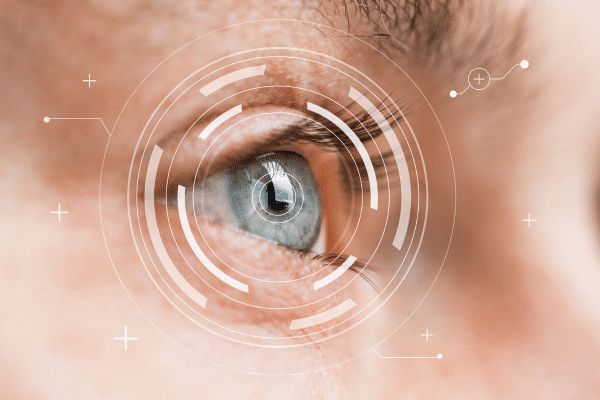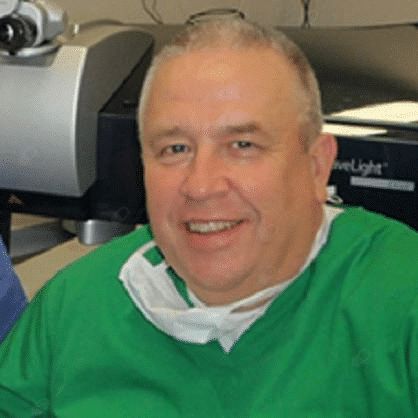Treatment of of keratoconus is a chance to regain visual acuity, stop the progression of the disease, and avoid corneal transplantation.
At Voigt Eye Clinic, we perform globally innovative procedures that effectively treat keratoconus: implantation of intrastromal rings and cross-linking (with or without epithelial retraction), but we also use the innovative Topoguided procedure (corneal modeling). Treatments, diagnosis and aftercare are performed by experienced specialists.
What is keratoconus ?
Keratoconus is a disease that causes a change in the shape of the cornea – from spherical to cone-shaped. As a result, the quality of vision deteriorates, there is distortion of the outline of the image of figures and objects, split vision, the need for frequent rubbing of the eyes and the need for frequent changes of glasses or lenses. Typically, keratoconus is diagnosed in young, healthy and active individuals between 15 to 20 years old. The disease develops particularly rapidly in patients under 30, and slows down (sometimes even stops completely) in those over 55.

Kkeratoconus needs to be treated!
Depending on the severity of the disease, this can be conservative or surgical treatment. Eyeglasses and contact lenses can be helpful only in the first stages of the condition, when the lesions are not very advanced and the deterioration of vision does not impede the patient’s normal functioning. However, innovative and effective measures are indicated as the disease progresses.
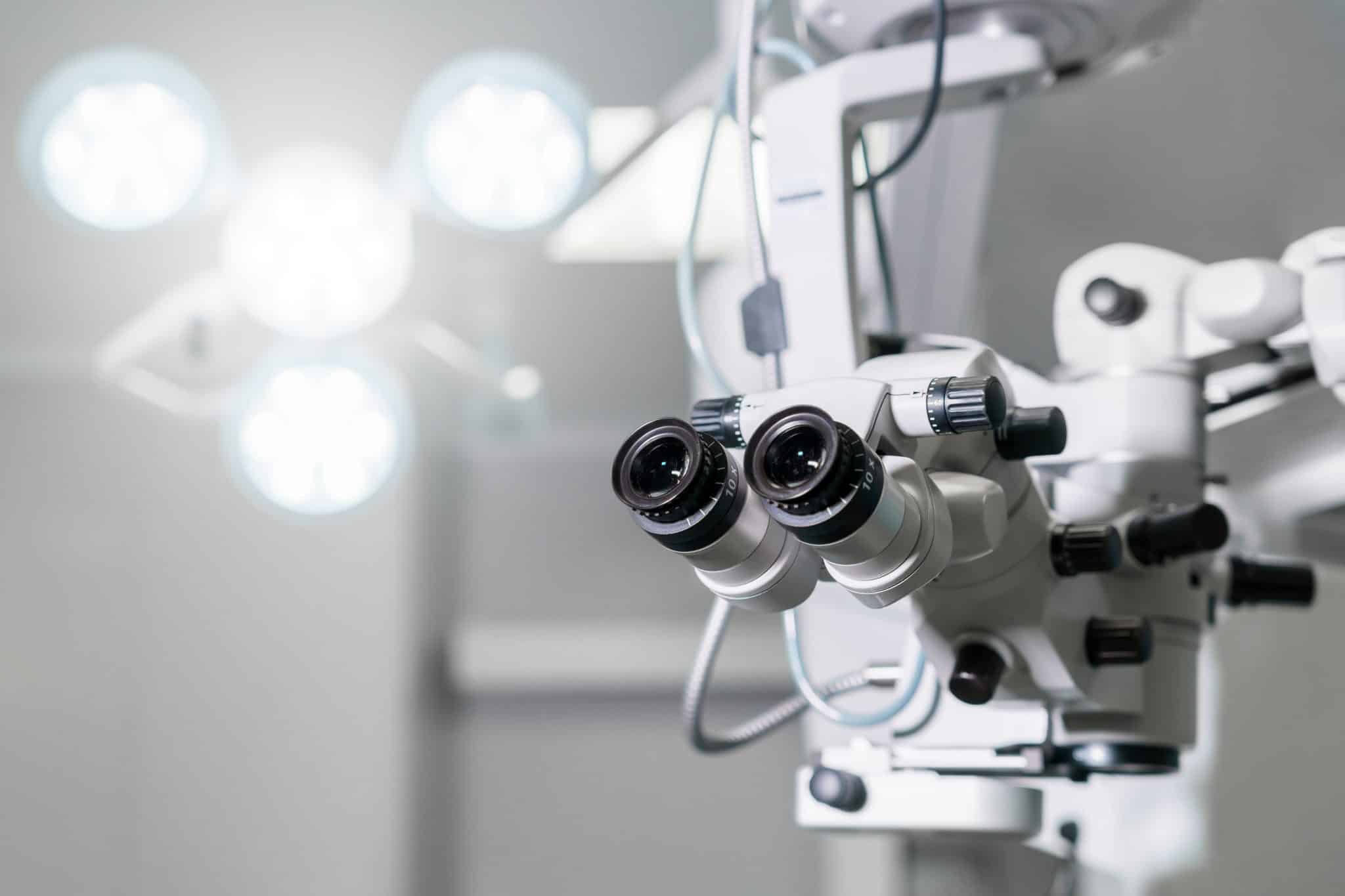
Keratoconus – an increasingly common eye condition
A healthy cornea has the characteristic shape of a sphere and is a shield for the eyeball. In the course of keratoconus, its center becomes thinner, and the action of intraocular pressure conveys the cornea. The result is a significant deterioration in the quality of vision, an increase in astigmatism, and the so-called “vision gap. The halo effect, which is a blurring of the sharpness of images near light sources.
The incidence of corneal cone, according to epidemiological studies is about 54 – 265 cases per 100,000. Each year the incidence is between 2 and 23 cases per 100,000.
In light of various epidemiological studies, it appears that the incidence of corneal cone is more common than it might have seemed not long ago. The literature reports that the frequency of the disease is about 54 to 265 cases per 100,000. individuals.
Keratoconus – What does this condition consist of?
Keratoconus is a fairly common degenerative-dystrophic disorder of the eye, which consists of a protrusion of the central and lower parts of the cornea, accompanied by an undulation of Descemet’s membrane. In a lateral cross-section of the eye, this is evident as the cornea takes on a cone shape instead of the characteristic sphere. In addition, the thickness of the cornea is reduced by up to 2/3, it becomes less rigid and loses strength. In 85% of patients, lesions appear in both eyes, with their development usually asymmetrical and uneven.
What are the symptoms of keratoconus?
The first symptoms of keratoconus can appear as early as a few years of age and develop up to 40-50 years. Later, the disease process slows down and even stops. The keratoconus, of course, needs to be treated – depending on the severity of the disease, this can be conservative or surgical treatment.
To date, no single specific cause of keratoconus has been identified. However, a genetic error is believed to be among the risk factors for the disease, as well as minor mechanical trauma to the eye, frequent rubbing of the eyes, and allergies that manifest as itching and burning eyes.
Keratoconus is observed as a comorbidity in genetic diseases such as Down syndrome and Marfan syndrome.
Most commonly observed symptoms of keratoconus
- Deterioration in the quality of vision,
- Distorting the outline of an image of figures or objects,
- split vision,
- A feeling of irritation in the eyes,
- The need for frequent eye rubbing,
- The need to change glasses or lenses frequently.
Are you interested in this treatment?
At our clinic, experienced specialists take an individual approach to each patient. You are welcome to schedule a consultation.

More than 120 years of experience passed down from generation to generation.
Cross-linking – a procedure used in the first stage of keratoconus progression
Cross-linking – or so-called. Crosslinking, is one of the most modern and widely used ophthalmic procedures aimed at stiffening the cornea and increasing its strength. This is a procedure that primarily protects the cornea from the progression of the keratoconus. It is performed transepithelially using UV light.
Cross-linking involves topical administration of riboflavin to the cornea, which induces the formation of new collagen connections in the cornea. The cornea is then irradiated with ultraviolet light, which stimulates the production of collagen bonds, making it stiffer, stronger and less prone to deformation.
The procedure is painless, minimally invasive, safe and effective – in the vast majority of patients, the initial corneal changes are slowed, arrested and even reversed. After the procedure, the patient can function normally and return to daily activities. This procedure is usually used in the first stage of keratoconus progression.
At our clinic, we are working to improve this method of treating keratoconus.
TOPOGUIDED + CROSS-LINKING – procedure used in the second stage of keratoconus progression
The treatment consists of two consecutive procedures. The first procedure is topoguided. It involves individual laser action at each point on the cornea to level its surface. In the case of keratoconus topoguided is performed after removing the epithelium. The epithelium is removed with an excimer laser (trans-PRK method), which means that the edges of the cornea are not “ragged” as in the case of procedures using the so-called “trans-PRK”. “field hockeys” (PRK) or another form of PRK, that is, the use of a “field hockeys” with a plastic cap, or EBK. This allows the epithelium to rebuild so that the epithelium regularly covers the cornea, creating a perfectly smooth surface.
The procedure is performed with a single laser and is completely safe for the patient. Another procedure in this procedure is cross-linking (after epithelial abrasion), which aims to strengthen the collagen bonds of the cornea and inhibit the progression of the cone.
The difference between the treatment in this case, is that the UV rays penetrate the deeper layers of the cornea, resulting in an increase in the area of collagen fiber strengthening. Among other things, the topoguided procedure is designed to improve vision by aligning the corneal surface, as well as provide the opportunity for subsequent selection of spectacle correction or correction with soft lenses.
Six months after the procedure, the patient can perform laser refractive error correction with a surface method and get rid of glasses or lenses completely. While the procedure itself is painless, the eye hurts for about a week after the procedure. 2-3 days, which is natural for epithelial reconstruction. After a few days, vision improves over time, and visual acuity can even reach 100%. This treatment is used especially in the second stage of keratoconus progression.
Intacs ring implants – procedure used in third stage of keratoconus progression
Intacs rings are semicircular implants that are implanted in the peripheral parts of the cornea for the patient. The ring is made of PMMA plastic and is completely safe for the eye. These rings flatten and align the cornea, stabilize it, which delays the need for a transplant, but most importantly – improve visual acuity. PIOTR VOIGT WAS ONE OF THE FIRST IN THE WORLD TO USE THE TREATMENT OF THE KERATOCONUS WITH ONE RING rather than with two halves, as was the case in the initial use of the rings.
How does the Intacs ring implantation procedure work?
During the procedure, using a femtosecond laser, the ring is inserted into a tunnel previously created with the laser. The cone is usually located in the lower part of the cornea due to gravity. Therefore, the ring, placed in the right place, is designed to mechanically “push” the cone upward, which will level the corneal surface. This stage (of shifting) lasts approx. six months, that is, during this time the patient may alternately experience an improvement and deterioration of vision until the cornea has a reasonably adequate shape.
The procedure is painless and takes about 20 minutes, and the patient can function normally after the procedure.
Importantly, the central part of the cornea is not interfered with during the procedure, the procedure is safe, effective and fully reversible – the rings can be removed at any time.
The full effects of the treatment are felt after about three months.
The procedure is usually a rescue from corneal transplantation and an alternative for better vision. Intacs generally stays in the patient’s eye for the rest of his or her life and is also a safeguard against disease progression. Intacs ring implantation is used in the third stage of cone progression. The fourth phase leads to transplantation.
See what Piotr Voigt says about INTACTS and Cross Linking treatments
Patient care after keratoconus treatment
Each patient after keratoconus surgery, performed at Voigt Eye Clinic, is under continuous, free care from our center for a minimum of 6 months, depending on the progress of the condition.
Elimination of keratoconus – price of the procedure
The price of the procedure depends on how the keratoconus is treated. Detailed information and current prices can be found on the Price list.
Is the procedure reimbursed by the NFZ?
Surgical treatment of corneal cone is not reimbursed by the NFZ. The procedures can be performed only in the most prestigious clinics in Poland.
Expert content on our blog
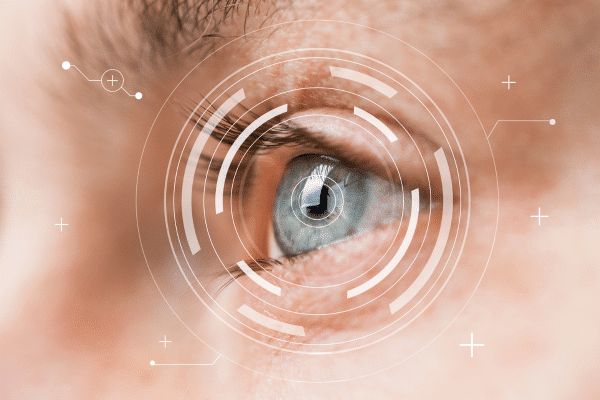
July 26, 2022
Laser Vision Correction in Krakow – Vlasik Method
See what our proprietary vision correction method is all about.
Read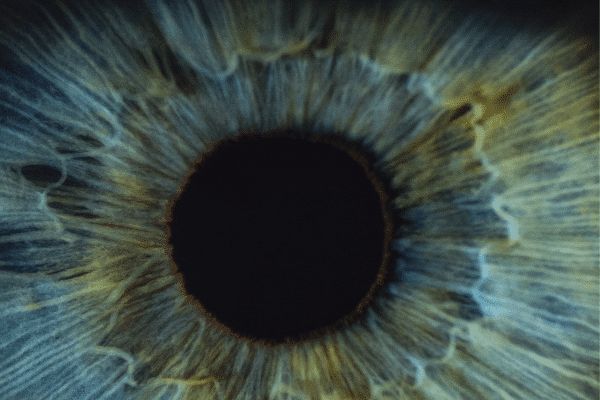
June 23, 2021
Refraction of the eye – what is refraction and what are the main refractive disorders of the eye?
What are refractive errors and how are they corrected?
Read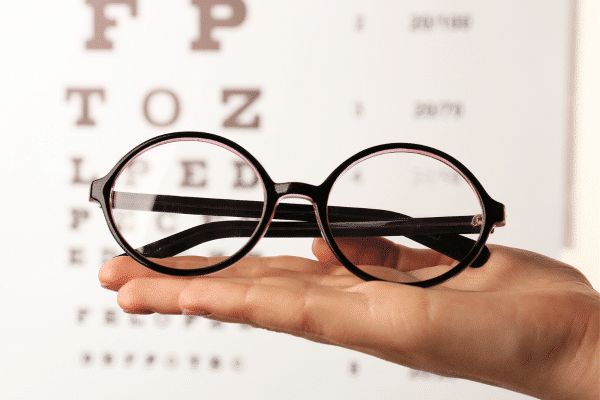
June 7, 2021
What eye defects qualify for a disability certificate?
When a visual defect makes normal life difficult or impossible, a patient can apply for a disability certificate. What eye defects qualify for a disability rating?
Read
